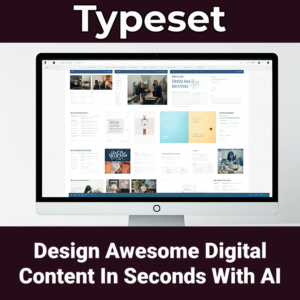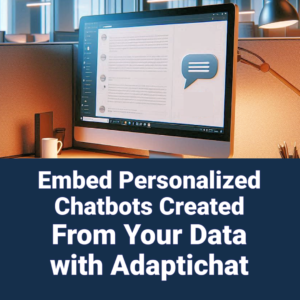Google Gems, the tech giant’s latest innovation in search technology, is set to revolutionize the way we interact with information online. This cutting-edge feature harnesses the power of artificial intelligence to deliver more personalized, context-aware search results that adapt to your unique needs and preferences.
By seamlessly integrating with your Google ecosystem, Gems offers a smarter, more intuitive search experience that not only answers your questions but anticipates your next move. From providing succinct summaries of complex topics to offering tailored recommendations based on your search history, Google Gems promises to save you time, enhance your productivity, and unlock new realms of knowledge discovery. As we delve deeper into the capabilities of this groundbreaking tool, prepare to witness a paradigm shift in how we navigate the vast sea of online information.
Starting with the basics, prompt engineering is about creating clear instructions for AI systems to get the results you want. This skill is important because it helps the AI understand what you need it to do. Good prompts are clear, specific, and provide enough context. Think of it like giving a recipe to a chef. The recipe needs to be detailed so the chef can make a delicious meal. Similarly, a well-crafted prompt ensures the AI gives you the right output.
For example, saying “Write a short story about a brave knight” is better than just saying “Tell me a story.” The first prompt is clear and specific, so the AI knows exactly what to do.
Prompt engineering isn’t just about giving commands. It’s also about understanding what the AI can and can’t do. You need to know the AI’s training data, its potential biases, and how it interprets different inputs. This knowledge helps you create prompts that make the most of the AI’s strengths and avoid its weaknesses.
Real-World Applications of Prompt Engineering
Prompt engineering can be used in many industries. In marketing, it helps create personalized campaigns, automate customer service, and generate engaging content. For example, marketers can use prompts to analyze customer data and create tailored marketing messages, making their campaigns more effective.
In customer service, prompt engineering helps create AI systems that understand and respond to customer questions accurately. By crafting specific prompts, businesses can ensure their AI systems provide helpful responses, improving customer satisfaction and reducing the workload on human agents.
Content creators can use prompt engineering to generate ideas, draft articles, and even create entire pieces of content. Clear and detailed prompts guide the AI to produce high-quality content that meets their needs.
In education, prompt engineering can create AI tutors that provide personalized learning experiences. By crafting prompts that guide the AI to understand a student’s strengths and weaknesses, educators can create customized learning plans that help students achieve their goals.
Introducing Google’s Gemini Model
What is Gemini?
Gemini is Google’s latest and most advanced AI model, developed by Google DeepMind. It represents a big step forward in AI technology, offering a multimodal approach that integrates text, images, and code. This allows Gemini to process and understand information across different formats, making it a versatile tool for many applications.
Gemini was trained on a lot of data, including text, images, and code, to create a model that can understand and generate content in different formats. This multimodal approach allows Gemini to perform complex tasks that require understanding both text and visuals.
For example, Gemini can analyze a text document and generate a summary, create a visual representation of the data, or even write code based on the content. This versatility makes Gemini a powerful tool for businesses and individuals looking to use AI for various tasks.
Multimodal Capabilities of Gemini
One of the best features of Gemini is its ability to combine different types of data with the reasoning abilities of a language model. This multimodal approach enables Gemini to perform complex tasks that require understanding both text and visuals. It has shown top performance in many benchmarks, including language, coding, reasoning, and multimodal reasoning tasks.
Gemini’s multimodal capabilities allow it to understand and generate content that combines text, images, and code. For instance, it can analyze a text document and create a visual representation of the data, or it can write code based on the content. This versatility makes Gemini a powerful tool for businesses and individuals looking to use AI for various tasks.
In marketing, Gemini’s multimodal capabilities can create personalized campaigns that combine text and images. For example, a marketer can craft a prompt that instructs Gemini to analyze customer data and generate a personalized email campaign with tailored text and images. This approach can enhance the effectiveness of marketing campaigns and improve customer engagement.
In education, Gemini’s multimodal capabilities can create AI tutors that provide personalized learning experiences. By crafting prompts that guide Gemini to understand a student’s strengths and weaknesses, educators can create customized learning plans that help students achieve their goals.
Exploring the Gems Feature
How Gems Simplify Prompt Engineering
The Gems feature within Gemini is designed to make prompt engineering easier. It offers pre-built prompt examples that users can modify to create their own custom AI bots. This hands-on approach helps users understand how to structure prompts effectively, making it easier to develop custom AI solutions for various tasks. By providing a user-friendly interface and practical examples, Gems make prompt engineering less complicated.
Gems provide users with practical examples of prompts that can be customized to suit their specific needs. For instance, a marketer can use Gems to create a custom AI bot that generates personalized email campaigns based on customer data. By experimenting with different prompts, users can learn how to fine-tune the AI’s behavior to achieve the desired outcomes, thereby enhancing the overall user experience.
Practical Examples of Gems in Action
Gems provide users with practical examples of prompts that can be customized to suit their specific needs. For instance, a marketer can use Gems to create a custom AI bot that generates personalized email campaigns based on customer data. By experimenting with different prompts, users can learn how to fine-tune the AI’s behavior to achieve the desired outcomes, thereby enhancing the overall user experience.
In customer service, Gems can be used to create AI systems that understand and respond to customer questions accurately. By crafting specific prompts, businesses can ensure their AI systems provide helpful responses, improving customer satisfaction and reducing the workload on human agents.
In content creation, Gems can help writers and content creators generate ideas, draft articles, and even create entire pieces of content. By providing clear and detailed prompts, they can guide the AI to produce high-quality content that meets their needs.
In education, Gems can be used to create AI tutors that provide personalized learning experiences. By crafting prompts that guide the AI to understand a student’s strengths and weaknesses, educators can create customized learning plans that help students achieve their goals.
Educational Value of Gems
Learning Through Hands-On Experience
For those new to AI and prompt engineering, Gems serve as an educational tool that simplifies the learning process. By offering pre-built examples, users can experiment and learn how different prompts affect the AI’s output. This hands-on experience helps users gain a deeper understanding of prompt engineering principles and how to apply them effectively.
Gems provide a user-friendly interface that allows users to experiment with different prompts and see how the AI responds. This hands-on approach helps users understand the nuances of prompt engineering and how to create effective prompts that guide the AI to produce the desired results.
Benefits for Beginners and Professionals
Gems offer significant benefits for both beginners and professionals. For beginners, Gems simplify complex concepts and provide a gentle introduction to prompt engineering. For professionals, Gems accelerate skill development by offering practical examples and customization options. This makes it easier for users to harness the power of generative AI technologies and apply them to real-world scenarios.
For beginners, Gems provide a user-friendly interface that allows them to experiment with different prompts and see how the AI responds. This hands-on approach helps users understand the nuances of prompt engineering and how to create effective prompts that guide the AI to produce the desired results.
For professionals, Gems offer practical examples and customization options that allow them to fine-tune their prompts and create custom AI solutions for various tasks. This hands-on approach helps users understand the nuances of prompt engineering and how to create effective prompts that guide the AI to produce the desired results.
Practical Applications for Marketing Professionals
Enhancing Marketing Strategies with AI
Marketing professionals can leverage the power of AI to enhance their strategies and achieve better results. By using Gems, marketers can create personalized campaigns that resonate with their target audience, generate data-driven insights, and automate repetitive tasks. This not only improves efficiency but also allows marketers to focus on more strategic initiatives.
For instance, a marketer can use Gems to create a custom AI bot that generates personalized email campaigns based on customer data. By experimenting with different prompts, users can learn how to fine-tune the AI’s behavior to achieve the desired outcomes, thereby enhancing the overall user experience.
Case Studies and Success Stories
Real-world examples and success stories highlight the practical applications of Gems in the marketing industry. For instance, a company might use Gems to analyze customer feedback and generate actionable insights, leading to improved customer satisfaction and increased sales. These case studies demonstrate the measurable outcomes that can be achieved by integrating AI into marketing strategies.
In one case study, a company used Gems to create a custom AI bot that analyzed customer feedback and generated actionable insights. This approach led to improved customer satisfaction and increased sales, demonstrating the practical applications of Gems in the marketing industry.
In another case study, a company used Gems to create a custom AI bot that generated personalized email campaigns based on customer data. This approach led to improved customer engagement and increased sales, demonstrating the practical applications of Gems in the marketing industry.
In conclusion, Google’s introduction of Gems within the Gemini model is a significant step towards making AI prompt engineering more accessible to a broader audience. By providing pre-built prompt examples and a user-friendly interface, Gems help demystify the complexities of prompt engineering, enabling more people to harness the power of generative AI technologies effectively. For marketing professionals, this represents a valuable opportunity to enhance their strategies and stay ahead in the rapidly evolving landscape of AI-driven marketing.













